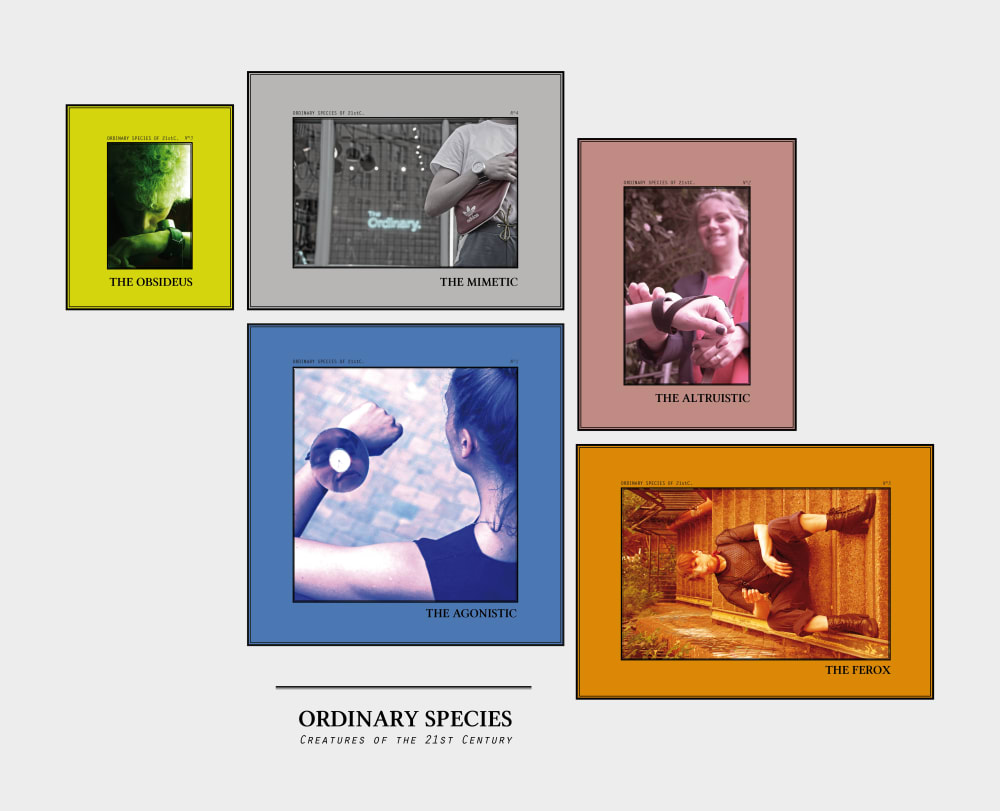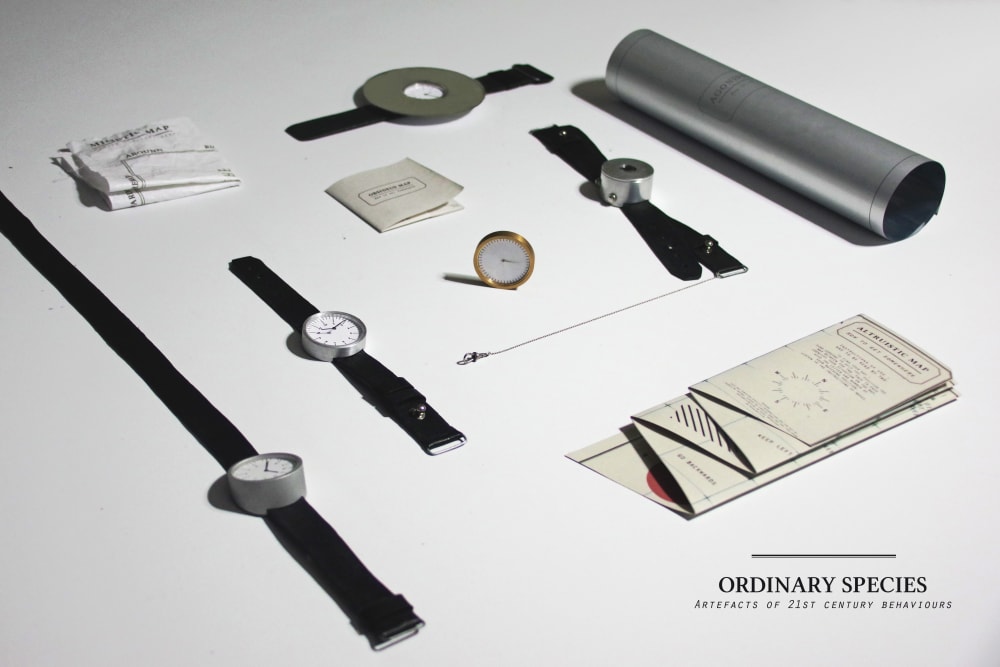Throughout Show Two: Design, we’re celebrating the work of our graduating students and asking them to share the process behind the practice
For her final graduating project from MA Industrial Design, Sixtine Neufville uses watches and maps to explore difference and question stereotypes.
Strangeness
I’ve been wondering how strangeness in another context isn’t that strange. How people can judge and criticise something for being odd but turn it upside down and it’s not that weird anymore. I wanted to explore the “normal” and “the ordinary” so I interviewed friends, family and strangers about their everyday practice. I wasn’t sure what I was looking for, but I began classify their behaviours towards it. From those patterns of general conduct I created five caricatures and the objects for them.
George Perec
I’ve been inspired by The Situationists and the writing of George Perec. His attempt to de-familiarise the everyday object and ask us to question our surroundings: what we are doing, why and how? That’s what I’ve been asking in my interviews. Perec writes about the “infra-ordinary”, that which is so embedded and automatic that it is lost. It’s the opposite of extraordinary, but just as extreme.
“What we need to question is bricks, concrete, glass, our table manners, our utensils, our tools, the way we spend our time, our rhythms. To question that which seems to have ceased forever to astonish us. We live, true, we breathe, true; we walk, we open doors, we go down staircases, we sit at a table in order to eat, we lie down on a bed in order to sleep. How? Why? Where? When? Why?... Make an inventory of your pockets, of your bag. Ask yourself about the provenance, the use, what will become of each of the objects you take out.” George Perec

Ordinary Species
I focused on the design of a watch and map because time and space are our continual contexts, they give structure to systems, with an implicit influence: here, physically on the wrist, and metaphorically in movements. I created five pairs of objects corresponding to five defined behaviours.
Agonistic – this is a narcissistic person, with a desire to stand out and an interest in imagery. They are leaders, always interested in their individuality. The watch is the biggest, the most visible and contains a mirror to reaffirm their image. The map does not contain any guidance and once again reflects the image of the user as he/she needs to choose the direction.
Altruistic – this character exists through others, in an allegiance to them. The watch is always facing away because this person is always giving time to others, figuratively and literally. The map needs to be read with someone else to make decisions. It’s a depiction of social interaction.
Obsideus – this character needs rules and control. The watch needs to be studied really closely, it’s heavily detailed and very precise. The map is very small but complex. Both objects emphasise the obsessive behaviour but are a security for this type of person.
Mimetic – this character is always adapting, blending in the mass and hiding in the crowd. The watch is "super normal" and looks like a watch but it doesn’t tell the time. It’s there only to fulfil social expectations. The map just says “you are here”, a constantly accurate map but gives no clues on further orientation.
And finally Ferox – has no rules or conventions. Instead of a set of objects, it’s represented by one device which can be a compass for the direction, or a watch for the time. But there are no instructions, they have the freedom to read it as they want.

Stereotypes
My classifications are not to be taken as a truth. The objects show how easy it is to use stereotypes to create products, shaping behaviours, nourishing myth and how easy it is to believe them.
In life, we accept the objects given to us and the assumptions and shortcuts that go with it. That is what is on the market. There are so many things made for a defined type of person without any consideration of the people in-between. This is where differences – whatever they are – tend to be rejected as well. That’s one of the reasons we have so many objects, because nothing is the right fit for the individual.
I wanted to create these tools to estrange ourselves in a strange familiarity. Looking at ourselves as a species, an animal, something else. To reflect, to give distance and defamiliarise our norms.
Sixtine Neufville was nominated for the MullenLowe NOVA Awards. Her work was shown at Central Saint Martins during Show Two: Design, 19-23 June.



